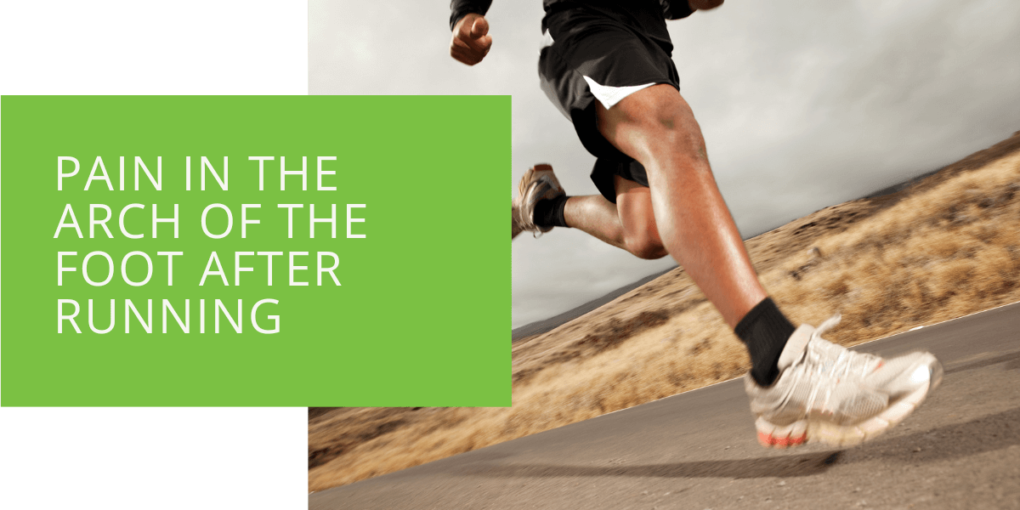Understanding Pain in the Arch of the Foot After Running
If you're a runner, you know how exhilarating and freeing it feels to hit the pavement or trail and take off on a good run. However, with any physical activity comes the risk of injury, and one common complaint among runners is a pain in the arch of the foot. In this article, we'll explore the anatomy of the arch, common causes of arch pain, symptoms, diagnosis, treatment, and prevention options so you can get back to running pain-free.
Anatomy of the Foot Arch
The arch of the foot is the curved area that runs from the ball of the foot to the heel. It comprises several structures, including bones, ligaments, tendons, and the plantar fascia. The plantar fascia is a thick band of tissue that runs along the bottom of the foot and helps to support the arch. When any of these structures are compromised or damaged, it can lead to pain in the foot's arch.
Common Causes of Pain in the Arch of the Foot After Running
Plantar Fasciitis
One of the most common causes of arch pain is plantar fasciitis. This condition occurs when the plantar fascia becomes inflamed, typically from overuse or repetitive stress on the foot. Runners who log many miles or increase their mileage too quickly may be at higher risk for developing plantar fasciitis.
Strains or Sprains of the Arch or Surrounding Structures
Any sudden twisting or rolling of the foot can cause a strain or sprain of the arch or surrounding structures, leading to pain and discomfort. This can happen if you step on an uneven surface or your foot lands awkwardly while running.
Poor Biomechanics
If you have poor biomechanics, such as overpronation or flat feet, it can put extra stress on the arch of your foot and lead to pain. Overpronation occurs when your foot rolls too far inward when you walk or run, while flat feet mean that the arch of your foot is lower than normal.
Improper Footwear or Worn-out Shoes
Wearing shoes that don't provide enough support for your foot type or are worn out can also lead to pain in the foot's arch. It's important to choose shoes appropriate for your foot type and to replace them regularly to ensure proper support.
Other Underlying Conditions
Other underlying conditions, such as high arches or damage to the posterior tibial tendon, can also cause pain in the foot's arch. If you're experiencing persistent pain, it's important to see a podiatrist for an accurate diagnosis.

Symptoms of Pain in the Arch of the Foot After Running
Pain in the arch of the foot can range from a dull ache to a sharp, stabbing pain. It may also be accompanied by swelling, redness, or warmth in the affected area. The pain may be worse during or after running, or it may persist even when you're not active.
Diagnosis of Pain in the Arch of the Foot After Running
If you're experiencing pain in the arch of your foot, it's important to see a podiatrist for an accurate diagnosis. During your appointment, your podiatrist will take a detailed medical history and perform a physical exam of your foot. They may also order imaging tests, such as X-rays or an MRI, to get a better look at the structures in your foot.
Treatment Options for Pain in the Arch of the Foot After Running
Rest, Ice, Compression, and Elevation (RICE)
If you're experiencing pain in the arch of your foot after running, it's important to rest and avoid activities that aggravate the pain. Applying ice to the affected area for 20 minutes at a time, several times a day can help to reduce swelling and inflammation. Compression and elevation can also help to reduce swelling and improve circulation to the affected area.
Pain Management Techniques
Your podiatrist may recommend pain management techniques, such as nonsteroidal anti-inflammatory drugs (NSAIDs) or corticosteroid injections, to help manage your pain and reduce inflammation.
Physical Therapy and Rehabilitation Exercises
Physical therapy can help improve the strength and flexibility of the muscles and tendons in your foot and ankle, reducing the risk of injury. Your physical therapist may also recommend specific exercises or stretches to target the arch of your foot and improve your overall biomechanics.
Shoe Modifications or Custom Orthotics
Your podiatrist may recommend shoe modifications or custom orthotics to help support your foot and reduce the risk of further injury. Orthotics are custom-made shoe inserts designed to provide additional support and cushioning to your foot, helping to reduce stress on the arch.
Surgery
In rare cases, surgery may be necessary to repair damage to your foot's arch or relieve persistent pain. Your podiatrist will discuss your treatment options with you and help you decide which approach is best for your needs.

Prevention of Pain in the Arch of the Foot After Running
There are several things you can do to prevent pain in the arch of your foot after running, including:
Proper Warm-up and Cool-down Techniques
Before you start running, it's important to warm up your muscles and get your blood flowing. This can help to reduce the risk of injury and improve your overall performance. After your run, take the time to cool down and stretch your muscles to help prevent stiffness and soreness.
Gradual Increases in Training Intensity and Duration
If you're new to running or increasing your mileage, it's important to do so gradually to reduce the risk of injury. Start with shorter runs and gradually increase the duration and intensity of your workouts over time.
Choosing Appropriate Footwear
Choosing the right shoes for your foot type and activity level can help to reduce the risk of injury and improve your overall comfort. Look for shoes that provide adequate support and cushioning for your feet.
Strengthening Exercises for the Foot and Ankle
Strengthening exercises can help to improve the stability and strength of the muscles and tendons in your foot and ankle, reducing the risk of injury. Talk to your podiatrist or physical therapist about exercises that can help you target the arch of your foot.
Seeking Professional Help for Underlying Conditions
If you have underlying conditions, such as flat feet or high arches, it's important to seek professional help to manage them and reduce the risk of injury.
Conclusion
Pain in the arch of the foot after running can be a frustrating and debilitating problem for runners. However, with the right diagnosis and treatment, managing your pain and preventing further injury is possible. If you're experiencing pain in the arch of your foot, don't wait to seek professional help from a podiatrist. You can get back to running pain-free with the right treatment plan and prevention strategies.

